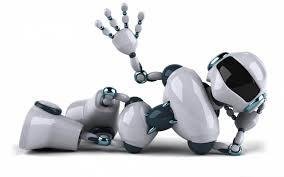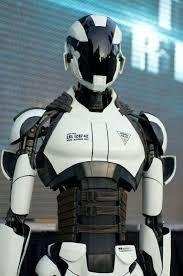The Robot uses his hand to "thinking"

The action speaks louder than words, especially if you are a robot. At least that is a theory offered by Europe's great efforts to develop an entirely new approach to robotics cognition.
The PACO-PLUS project seeks to test a breakthrough theory called "object-action complexes" (KTO). KTOs are units of "thinking by doing". Basically this approach designs software and hardware that allows the robot to think about objects in terms of actions that can be done on the object.
For example, a robot can see everything. If an object has a handle, the robot can also hold it. If the object has a hole, the robot may be able to match something to the hole or fill it with liquid. If the object has a cover or door, the robot may be able to open it.

Thus, objects have meaning or are interpreted by the range of possible actions that the robot can perform against those objects. This opens up a more interesting way for robots to think independently as it helps foster the possible behavior of developing complex behaviors that arise spontaneously because of simple rules.
Our universe demonstrates the marvelous complexity of a handful of universal constants and DNA consisting of only four bases, but all of them arise life. Researchers at PACO-PLUS hope to imitate at a certain level of complexity that complexity arises from that simplicity.
In some ways, their approach imitates the learning process of infants. When finding a new object, the baby will immediately hold it, eat it, or bump it with another object. Because they learn from trial and error, for example a round pole will enter the round hole then the range of action will be widespread.
Paying attention to others also adds to the child's understanding and then the child begins to use an action with a combination to accomplish more complex goals such as holding a doorknob and turning it around.
PACO-PLUS takes advantage of these proven strategies to enable robots to teach themselves by learning from their observations and experiences. As a key part of the strategy, PACO-PLUS organizes most of his work with Humanoid robots that are robots that resemble human beings.

"Humanoid robots are artificial manifestations with complex and perceptual full motor abilities that make them an experimental field suitable for learning cognition and processing of cognitive information," said Tamim Asfour, the leader of the Humanoid Research Group at the Institute of Anthropometrics at the Institute of Technology Karlsruhe Germany and co-coordinator of the PACO-PLUS project.
"Our work follows Rodney Brooks who is the first person to explicitly say that cognition is a function of our perception and our ability to interact with our environment, in other words, cognition arises from our being and existence in the environment."
Brooks, who published his most influential work in the 1980s, believes that moving and interacting with the environment are difficult issues in biological evolution, but by the time a species reaches it, it is easy to "evolve" the high-level, symbolic reasoning of the abstract mind. Brooks believes that intangible intelligence is an impossible problem.
This reverses the approach taken by "artificial intelligence". I believe if you develop enough intelligence, the mind of the machine will be able to sense and solve problems, while robotic cognition believes that if you develop perceptions and useful interactions, intelligence will spontaneously arise.
His assessment still requires more information to determine which is correct, but the robotics cognition faculty is supported by biology and now also handles the PACO-PLUS project.
In the advanced stage, there is no such robot candidate in the movie "I Robot". Although Hollywood's interpretation is still remote, the applications and examples developed by PACO-PLUS suggest that perhaps we are now on the right track.